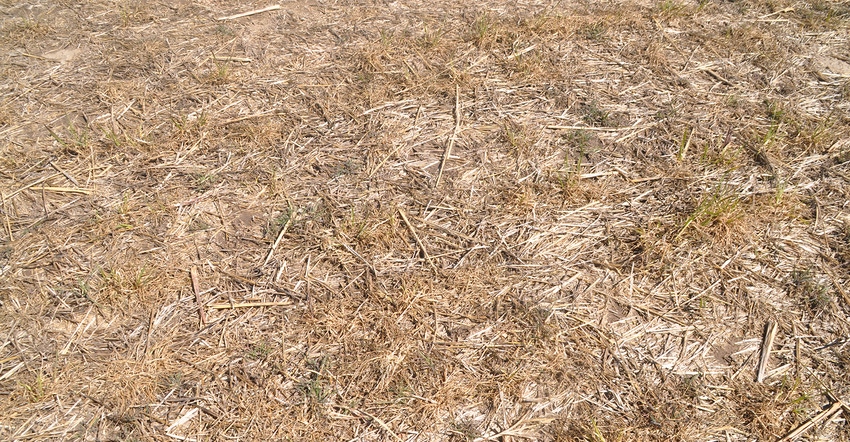
In some years, Kansas farmers could be called “upset” with their neighbors who fail to control volunteer wheat. In other years, you could call them “angry.” In postharvest 2017, more than one producer has said they are “mad as hell and not going to take it anymore.”
Losses to wheat streak mosaic virus in 2017 have not yet been tallied, says Kansas State University plant pathologist Erick DeWolf, but producers estimate losses will easily hit “millions,” with several western Kansas farmers reporting losses well above $100,000 in multiple fields.
Kansas ag economics attorney Roger McEowen says he has fielded a number of inquiries this year from producers who are angry enough to consider filing legal action against their neighbors for the damage caused to their fields by uncontrolled volunteer wheat, which provides a host plant for wheat curl mites to live and feed after harvest. When the new fall crop emerges, mites move into those fields, bringing with them the wheat streak mosaic virus, which can cause catastrophic yield losses — up to 100% of yields in fall-infested fields.
As bad as the damage is and the losses sustained are, McEowen cautions there are a number of reasons why lawsuits for damage from wheat streak are likely to fail.
First, there is no law that requires the destruction of volunteer wheat. There have been discussions in the state Legislature for a number of years about the idea of listing volunteer wheat as a noxious weed, which would require it to be destroyed.
Traditionally, that idea has been met with strong resistance from livestock producers who use volunteer wheat as forage for cattle after wheat harvest. There is also a likelihood of some pushback from the industry, which isn’t anxious to see anything with “wheat” in its name paired with the term “noxious weed.”
Second, from a legal standpoint, it could be difficult to prove that the mites in any given field came from a particular patch of volunteer wheat.
“The mites travel on the wind,” McEowen says. “It can be hard to pinpoint a responsible party in a given area.”
Third, he says, in the absence of a legal obligation to destroy volunteer wheat, the aggrieved party has to prove that his neighbor created a “nuisance” by a legal standard. That can also be difficult to prove in court and often comes up against the question of private property rights and whether one farmer’s damage is significant enough to override another’s right to use his property as he sees fit.
Lane County seed wheat grower Vance Ehmke says he thinks the damage claim is obvious.
“One guy gets free cattle forage,” he says. “Multiple producers lose $200 an acre on commercial wheat and more on certified seed. I think it’s pretty clear the losses outweigh the gain.”
Aaron Harries, Kansas Wheat vice president of research and operations, says he thinks a strong education effort and even a little “shaming” is in order to push producers in the right direction. He helped develop the Stop the Streak campaign for this summer and fall.
“I think we need to at least try the education route first,” Harries says. “I understand the strong attitude toward private property rights and taking care of this ourselves rather than have government regulations. But my message would be, if you know that your actions are hurting your neighbors and you are refusing to do the right thing, then you are the reason that we wind up with government regulations.”
About the Author(s)
You May Also Like




